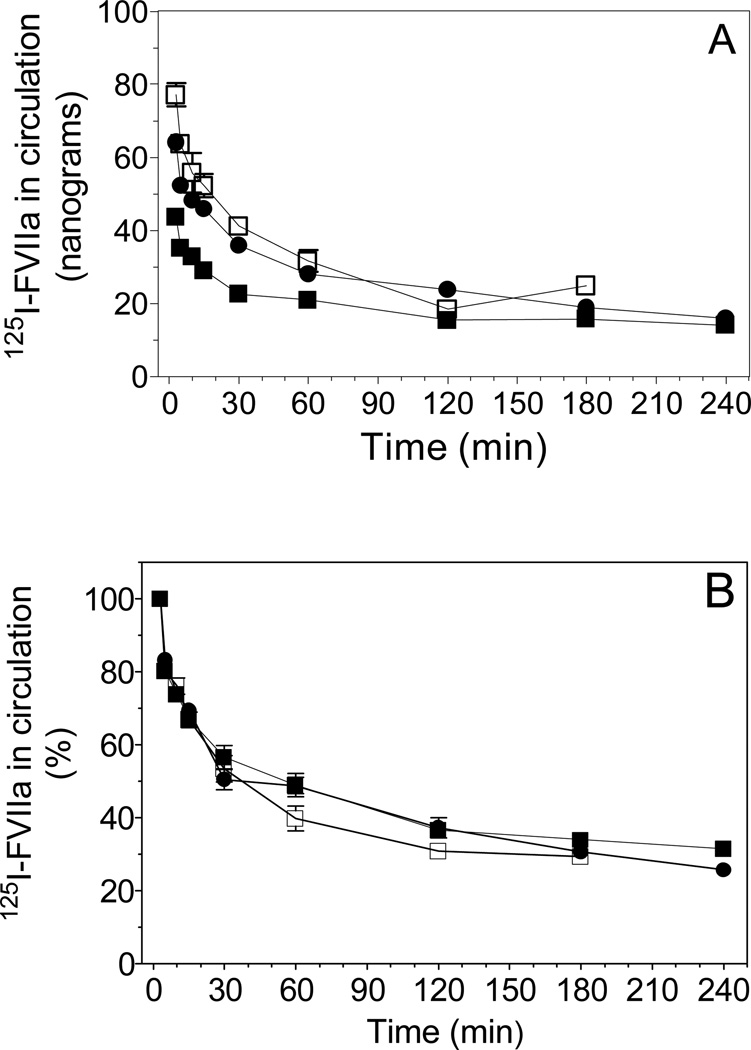Fig. 1.
In vivo elimination of FVIIa in wild-type littermates, EPCR-deficient and EPCR-over expressing mice. 125I-labeled human FVIIa (5 µg/kg body weight, ~125 ng/mice) was administered to mice as a single dose intravenously via tail vein. FVIIa levels in circulation were determined by measuring radioactivity in plasma samples derived from mice at varying time periods following administration of FVIIa at time-points ranging from 3 min to 240 min. The data were shown as ng FVIIa present in circulation (A) or normalized to the percent concentration of 125I-FVIIa present in circulation at 3 min (B). The symbols denote: (●), wild-type; (□), EPCR-deficient; (■), EPCR-over expressing mice.

